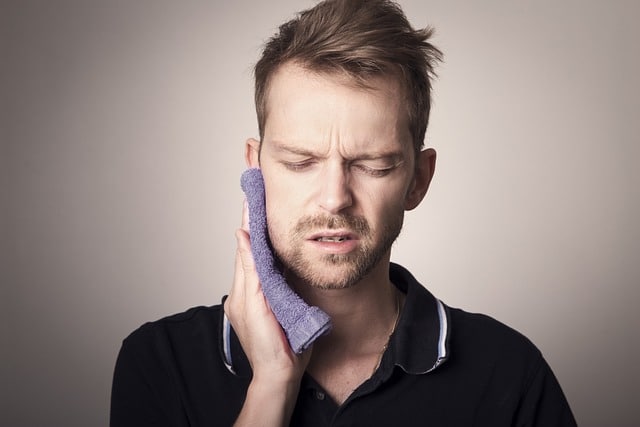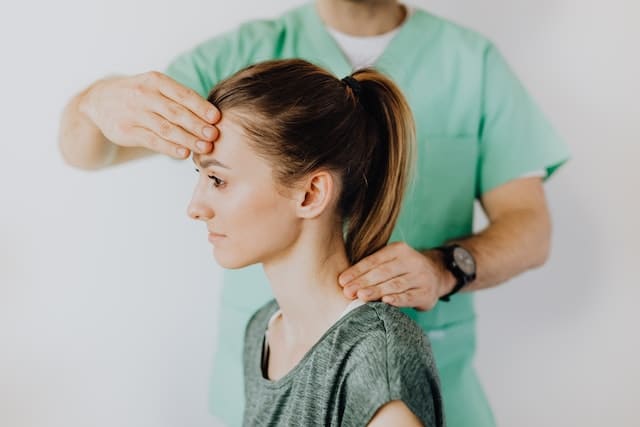Pain from TMD affects daily life
What Are TMJ and TMD?
TMD stands for temporomandibular joint dysfunction. The temporomandibular joint is the joint between the mandible (jawbone) and the skull. TMD refers to pain and dysfunction that occurs at the temporomandibular joint. While people often refer to this problem as “TMJ,” TMJ refers to the joint itself, and TMD refers to the dysfunction of the joint. Everyone has a TMJ, but not everyone suffers from TMD. TMD can be extremely painful. It can cause headaches, neck pain, clicking or popping of the jaw, locking of the jaw, and limited opening and closing of the mouth.
Why Do I Have Pain in My TMJ?
TMD is most often caused by clenching the jaw. Research shows that clenching is very common, and 90% of people who clench are unaware they are doing it! (Marbach, 1990). Clenching increases with stress and can be done during the day or at night during sleep. Clenching can also occur in a rhythmic, grinding pattern known as bruxism. This is often observed as a pulsing muscle contraction in the jaw. Clenching and grinding increase forces through the TMJ, causing pain and muscle spasms. TMD can also be caused by lifestyle habits like excessive gum chewing or by a traumatic event such as an elbow to the jaw in a sporting event.

What Is Causing My TMJ Pain?
Pain associated with TMD is often caused by two structures that support the joint:
The Joint Capsule (or Disc)
Problems with the joint or disc are characterized by clicking, popping, or locking of the jaw. Disc and joint issues also limit mouth opening (range of motion). If you can’t open your mouth wide enough to eat a hamburger, this often indicates a problem with the disc in the TMJ. The disc can slide out of position (typically forward or anteriorly). This is very painful because it causes increased pressure on the tissue and nerves behind the displaced disc, referred to as retrodiscal tissue. In some cases, a displaced disc can cause the mouth to “lock” shut.
The Muscles Around the TMJ
The muscles around the TMJ can also cause pain, headaches, and neck pain. The muscles impacted include the masseter and temporalis. The masseter is the primary chewing muscle in the jaw, and the temporalis is a fan-shaped muscle on the side of the skull. In patients with TMD, these muscles become tight and irritated. They can develop trigger points or hyper-irritable regions of soreness. These spots can relay pain and tension to other areas, causing discomfort in the head, behind the eyes, neck, and even the upper back or shoulders.
What Is the Treatment for TMD?
Treatments for TMD are based on what is causing the problem. If pain is coming from the joint or disc, there are specific maneuvers used to recapture the disc to the proper position. These maneuvers involve tractioning the jaw down and forward. Home exercises are also prescribed to help the patient restore the normal disc position. With this treatment, the patient often recovers mouth opening quickly. This is true in both chronic cases and cases where the jaw is acutely locked. A technique called post-isometric relaxation (PIR) can also be used to relax the jaw muscles and restore proper joint alignment.
If TMD is muscular in origin, various soft tissue treatments of the masseter or temporalis muscles can be used. These treatments are similar to massage therapy combined with stretching. The treatment can release stiffness, break up tissue density, and release trigger points, and, therefore, pain and irritation. The doctor can also manually mobilize the TMJ, which can release and relax muscle spasms.
Home exercises and education are also helpful to prevent jaw clenching. Consciously focusing on the neutral jaw position can, over time, stop clenching. The neutral position of the jaw is:
- Mouth closed
- Teeth apart
- Tongue on the roof of the mouth (as if clicking the tongue)
In some persistent cases, a dental appliance (night guard) can help prevent future muscle tension and pain.

Dr. Ward has an excellent track record of treating patients suffering from the discomfort of TMD. In some cases, TMD may require further treatment, such as surgery or orthodontic treatment. Although these cases are rare, Dr. Ward will refer you to another specialist if necessary.
If you think you may have TMD and would like to discuss gentle, noninvasive treatment options with Dr. Ward, please reach out to our office to schedule an appointment today.

